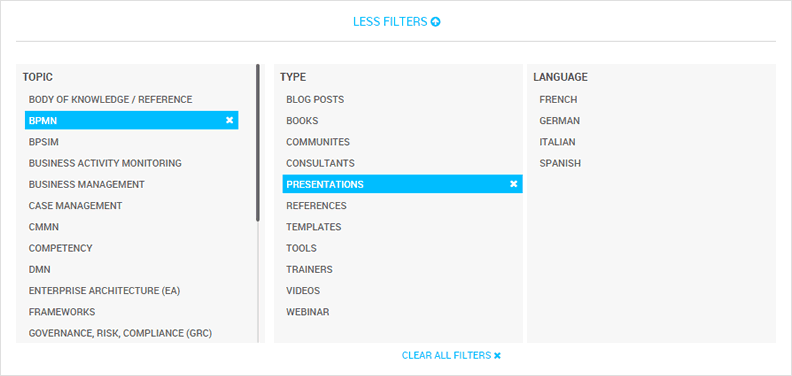Bottleneck in project management: Combating delays in production
Blog: Monday Project Management Blog

A bottleneck can refer to the narrow section of a bottle through which liquid flows before it comes out the top. It can also be the narrow section of road that causes merging traffic to back up. These might seem unrelated to project management, but they’re actually great visuals for what project management bottlenecks might look like.
This article defines bottlenecks in project management and provides some real-world examples. We’ll also let you know how monday.com helps you manage projects more efficiently, reducing the risks of bottlenecks and solving them quickly when they do occur.
What is the bottleneck effect in project management?
A bottleneck is pretty much a traffic jam in your project. Just as a bottleneck on the freeway causes traffic to slow to a crawl and keeps commuters from reaching their destinations on time, a bottleneck on your project delays work and puts deadlines at risk.
Bottlenecks can:
- Stop forward movement altogether, causing the project to stall out
- Slow forward movement, causing the project or part of it to be delayed
- Redirect forward movement so that the project team is moving laterally or even backward, which also leads to delays or stalling
To best understand what bottlenecks look like in project management, let’s look at an example.
“Bottleneck” is a part of our Project Management Glossary — check out the full list of terms and definitions!
An example of the bottleneck effect in project management
Consider a hypothetical project that involves a team of 10 people. Everyone is assigned tasks that fit their skills and knowledge, and those tasks line up on the project schedule as follows:
- Three people work on task A, which must be completed before task B can begin.
- Only one person has the skills to work on task B, which must be completed before tasks C and D can begin.
- The rest of the team is divided among tasks C and D.
Now, imagine that the actual labor hours required for all four tasks are equal — it requires 15 hours of work for each step.
The three people working on task A can work five hours each to get that step done in 5 hours. But with only one person working on task B, it will take 15 total hours. Meanwhile, everyone else is waiting to begin their own tasks because the project has hit a bottleneck that slows it down.
Bottlenecks typically result in delays, but it’s not always as straightforward as the example above. Understanding how a bottleneck in project management might slow your team down is the first step to correcting the issue.
How bottlenecks delay production
Some of the ways bottlenecks cause delays include:
- Slow production. If one person, machine, or process works at a slower pace than expected for any reason, it can create a delay in the project or production.
- Lack of resources/capacity. When you don’t have the right tools or enough people to do the work, slow down occurs.
- Confused communication. Misunderstandings, lack of communication, or failure to provide proper instructions can all slow down a process and create bottleneck-related delays.
- Poor planning. In some cases, the project team and processes are working correctly and well, but leadership didn’t correctly estimate how long something might take. This leads to the appearance of a bottleneck and delays in the delivery of a completed project.
To get back on track with a project, you have to know how to combat bottleneck effects like these.
How to combat the bottleneck effect in project management
The best way to reduce delays is to reduce bottlenecks, meaning you should put solutions in place proactively to keep work from slowing down or piling up. Some things project managers can do to combat bottlenecks are described below.
Creating redundancies
Avoid relying on a single employee, supplier, or machine whenever possible. If only one person can complete a task and they get sick, you have an instant bottleneck. If you only have one machine to handle a process, your production scale is capped at its capacity.
Automating where possible
Humans can only work so many hours a day. They get tired, make errors, and need to take time off for family and other obligations. Computers and machines don’t have these limitations, so when you automate tasks, you increase the potential for scale and reduce the chance of bottlenecks.
Using data when planning
Understanding your resources and looking at previous data on project timelines can help you create a realistic project schedule and account for bottlenecks you won’t be able to avoid when setting milestones.
You can’t avoid all bottlenecks, and some don’t put your project at risk if you planned appropriately. For example, you may know a critical team member is going on vacation during the project timeline. Building a project schedule with that in mind lets you weather the slow down that may occur during that time.
Knowing when to worry about bottlenecks and when they’re just a natural part of the process is as important as knowing how to deal with them.
When to worry about bottleneck
Project managers should worry about bottlenecks when:
- The bottleneck is likely to delay project work and put deadlines and delivery dates at risk
- There isn’t a clear or viable solution to alleviate the bottleneck
- Leadership doesn’t seem to think the bottleneck is a concern, so no efforts are invested in creating a plan to deal with it
Having the right project management software in place can help you worry less about bottlenecks and spend more time working with your team to avoid or solve for them.
Managing bottlenecks efficiently with monday.com
monday.com makes it easy to plan projects from start to finish, including building in solutions and allowances for bottlenecks.
Our customizable templates are a great place to start. Consider starting with our Project Management Plan Template to create a step-by-step look at how the team might approach their efforts. The collaborative board lets everyone provide feedback on the plan, so teams can brainstorm what-ifs and discover risks for bottlenecks. You can also create Gantt charts. These visuals make it easy to spot dependencies that could turn into bottlenecks during the project.
monday.com also supports automations, on-board and off-board collaborations, color-coding, and task assignments, all of which can help you move tasks forward to keep things from stalling out with a project.
Frequently asked questions
What is a bottleneck?
A bottleneck occurs when movement slows down or stops. One of the most familiar types of bottlenecks to most people occurs in traffic. If one of the lanes in a highway is closed, two lanes of traffic might have to merge into one. This usually results in vehicles moving slower at the merge point and traffic backing up, which is a bottleneck.
What is a bottleneck in business?
In business, a bottleneck occurs when work stops or slows down for almost any reason. If the volume of work coming into a team is too much for it and tasks sit, that’s a bottleneck. If one machine in a factory moves slower than all the others, it creates a bottleneck that lowers the capacity of the entire process.
How to identify bottlenecks in project management
You can identify bottlenecks in projects by:
- Mapping out workflows with the team to understand where work may be stalling out
- Looking at data and trends to see where evidence of slow downs might be
- Asking team members, who are often familiar with the bottleneck because they’re closely involved with the process
Uncork bottlenecks with monday.com
Bottlenecks drive down project performance. They can cause you to miss critical milestones or even put the timely delivery of a completed project at risk — which is bad for revenue, team morale, and customer satisfaction. Good project managers have a proactive approach to bottlenecks, avoiding them when possible and working to reduce their impact when they can’t be avoided. monday.com’s collaborative project management tools help teams work together to plan for, identify, avoid, and mitigate bottlenecks.
The post Bottleneck in project management: Combating delays in production appeared first on monday.com Blog.
Leave a Comment
You must be logged in to post a comment.








